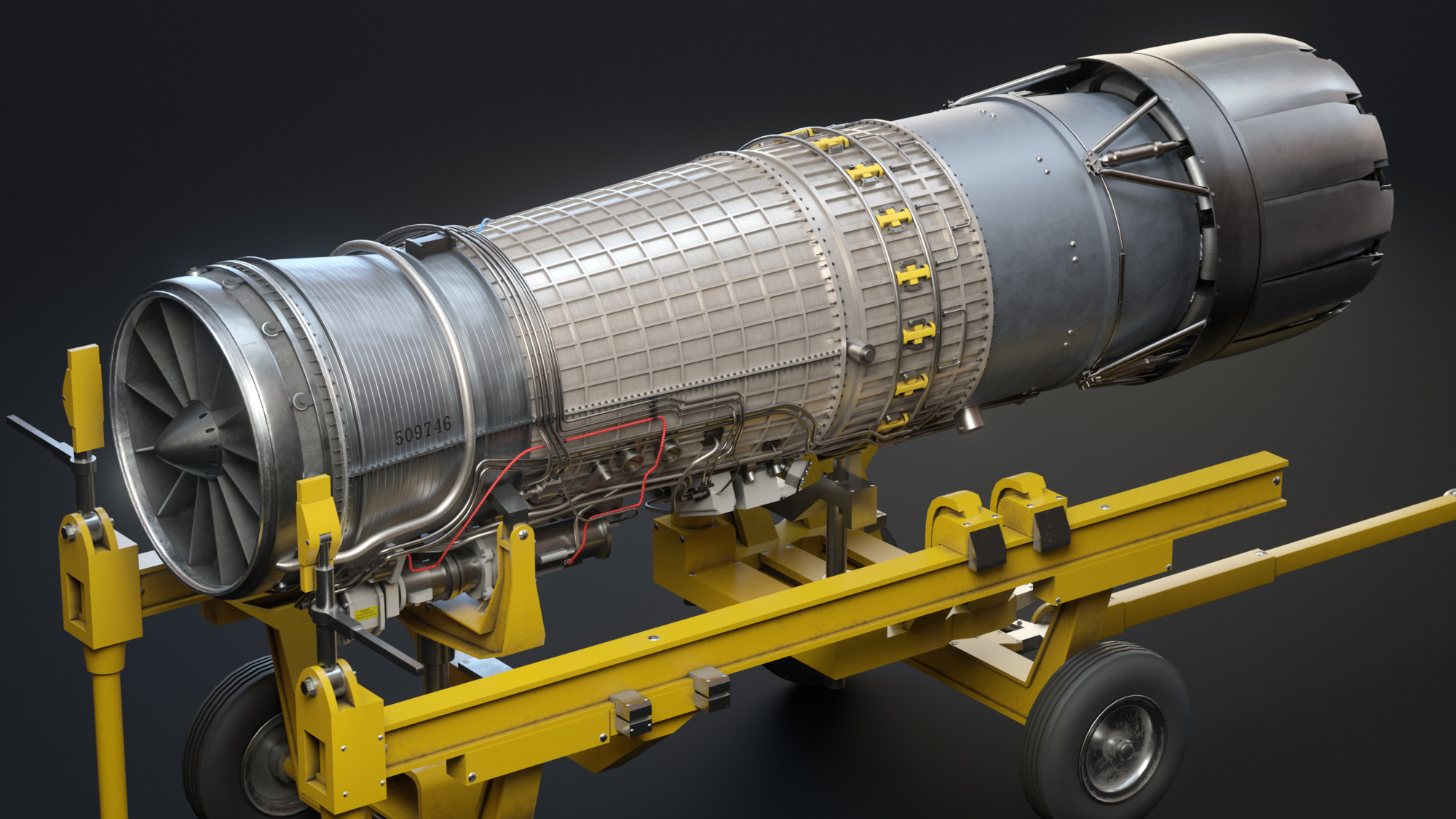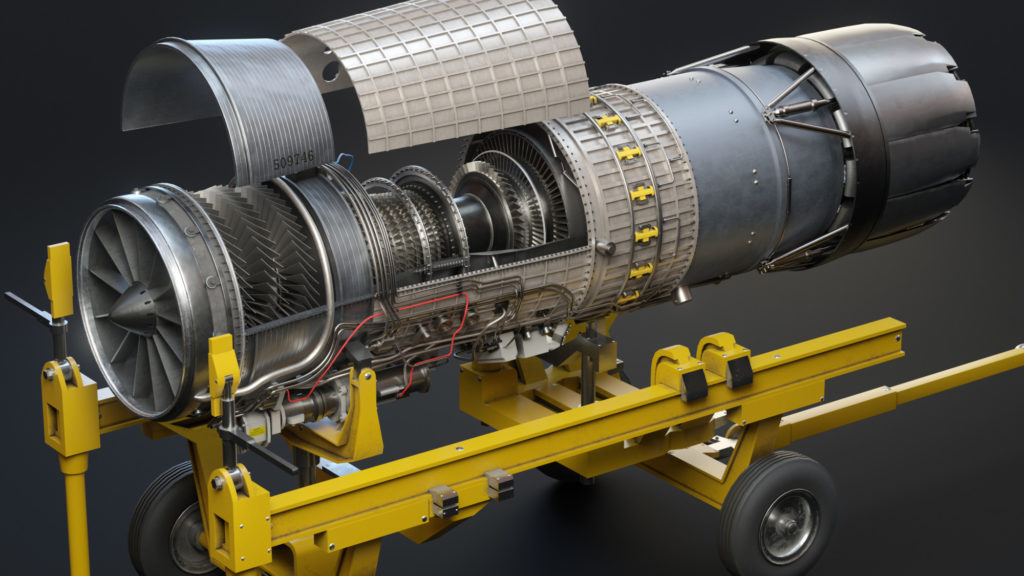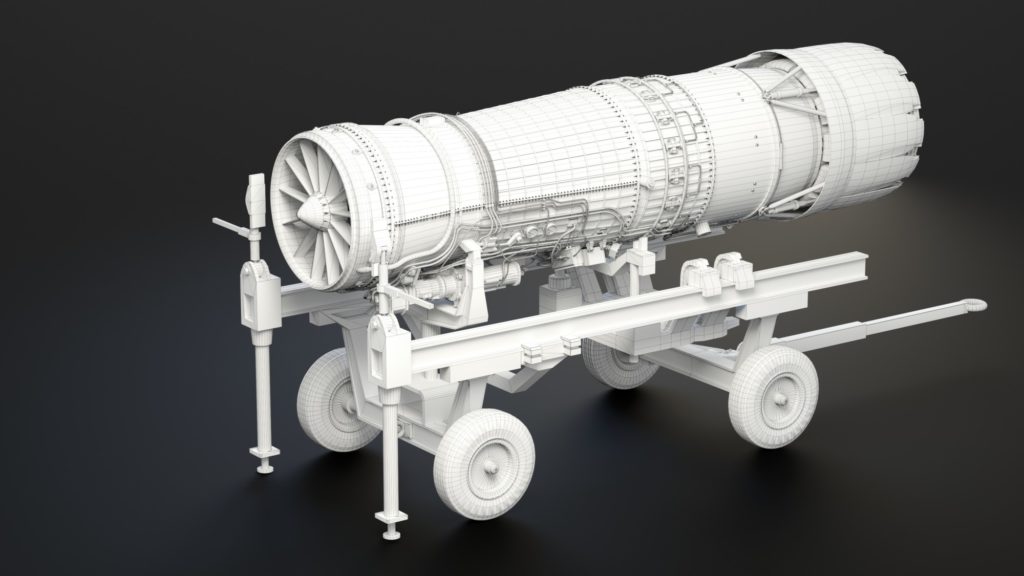Aerospace and Defence, Aviation and Logistics
E-Learning, Virtual Reality
Advanced GE F110 Turbofan Aerospace Training VR
Using VR to enable familiarisation and regular maintenance training on the GE F110 Engine without requiring the availability of live units.
PROJECT
GE F110 Turbofan
OBJECTIVE
SHIIFT was tasked with providing solutions whereby trainees could improve their familiarization of the GE F110 Turbofan as well as perform regular and routine maintenance on virtual engine units, all without the need for live units to be present.
APPROACH
Our team undertook the development of a fully-simulated, photo-realistic Virtual Reality (VR) digital twin of the F110 gas turbine, including all accompanying e-learning modules needed to familiarize trainees with every aspect of the unit and its maintenance.
The Problem – lack of available ge f110 turbofan units to train on
Within the aerospace and defense sector, many trainees are faced with the challenge of too few available live engine units such as the GE F110 Turbofan. Consequently, there is a growing demand for simulated virtual experiences within which trainees can practice maintenance. By providing virtual simulations, trainees could obtain practical ‘hands-on’ experience with virtual assets whilst simultaneously reducing the need for live, physical units, thereby reducing the overall expenditures and resource requirements within the aerospace and defense industry.
Another challenge which had to be overcome is the high risk of damage to serviceable engines by trainees unfamiliar with units such as the GE F110 Turbofan, which can result in a loss of operational capability and incur significant costs. Therefore, the solution needed to overcome these challenges by providing realistic, scaled virtual engine units with which trainees could familiarize themselves, as well as providing the ability to repair and maintain these units in a controlled virtual setting before working with live units.
The Solution – Interactive VR Aerospace Training of GE F110 Engine
Through SHIIFT’s fully virtual, simulated digital twin of the GE F110 Engine unit, including e-learning modules, our solution enabled trainees to interact and learn about the unit in a secure environment. This resulted in greater operational efficiency and fewer failures that would have resulted in costly damage to live operational assets. This optimized the existing aerospace maintenance training and completely transformed how aerospace maintenance training is carried out.
The innovative solution used a combination of both Virtual Reality (VR) capabilities as well as blended e-Learning modules which facilitate learning, training, and the evaluation of key skills related to the maintenance of the GE F110 Turbofan.
The application has three core components:
- Interface for trainers/instructors
- Immersive VR space for trainee/student learning
- Training assessment
Although the application is intended for one-on-one training, it can be modified to be self-run by students.

Application Touch points – Instructor
- Instructor can teleport/position the student to one of three predefined positions around the engine
- Instructor can remove and re-place engine panels to reveal inner workings
- Instructor can assign a fault for the student to find
- Instructor can activate the rotation of the turbine
- Instructor can turn the student’s headtorch on and off
- Instructor can end the session
Application Touch points – Student
- Student can remove and re-place engine panels to reveal inner workings
- Student can rotate the turbine by hand
- Student can find, identify and report faults assigned by the instructor
- Student can “walk”/teleport around the engine
- Student can take the assessment/quiz

Development engine
The VR application and e-Learning modules were developed using the Unity game development engine, a reputable and widely-used development engine for 3D games, VR, and Augmented Reality (AR) applications.


Which services did you use for this? Was it just VR?
Our e-Learning demonstration application was used for the F16 (GE F110 Turbofan) engine and the demo required two users to complete. The first user, the instructor, guides the trainee through the simulated environment and is able to evaluate and assess their performance. The second user, the trainee, is tasked with detecting faults assigned by the instructor. The demo keeps full records of vital statistics and key performance indicators of the trainee’s performance and provides an opportunity to test the trainee provided they have achieved a performance threshold.
How long did it take?
The total duration of the project was 6 weeks from the start of the project to its completion and submission to the client.
When was this completed?
The GE F110 Turbofan training solution and VR application were delivered to the client in February 2020.
PROJECTS YOU MIGHT BE INTERESTED IN
Get in touch.
Send us a message and we’ll get
back to you within 48 hours.
Alternatively, email
hello@shiifttraining.com
Deliver next generation training. Get in touch.
Email us at hello@shiifttraining.com or send
us a message and we’ll be in touch within 48hrs.